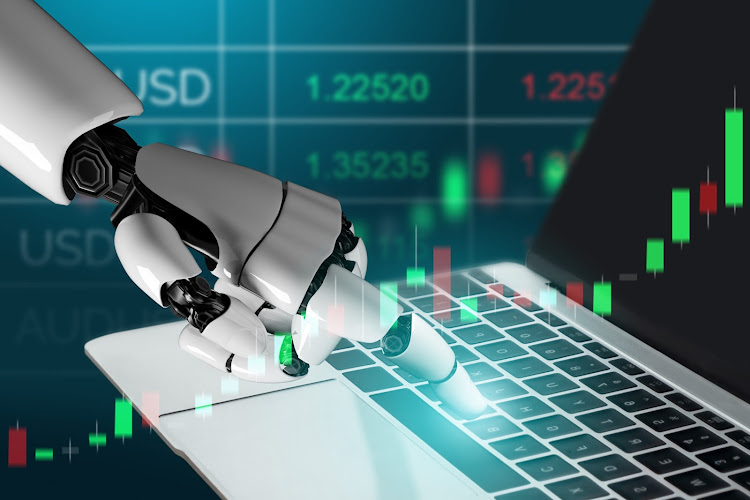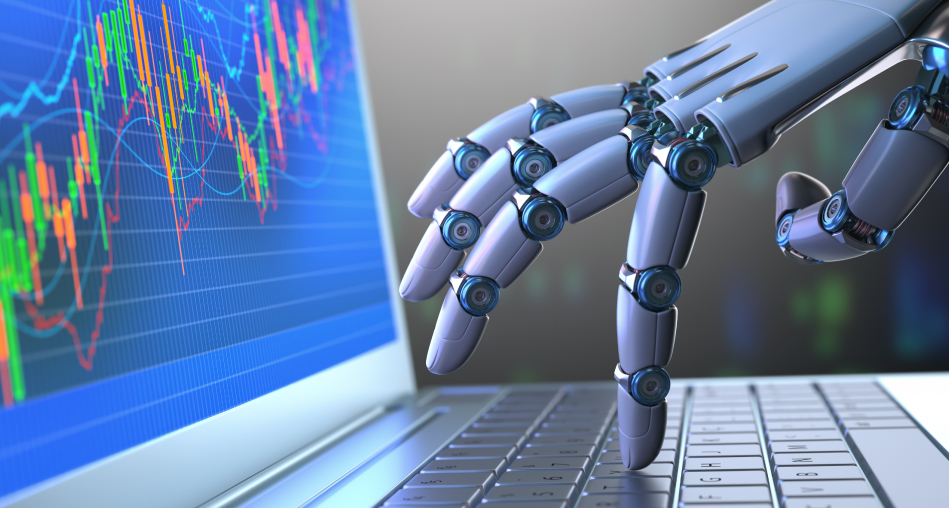Do you know why automated trading is very popular these days? Well, it facilitates fast and simple trade. Everything is handled by specialized software with automated trading. The algorithm uses the installed rules and guidelines to execute trades. Since it is a robot, trading is executed faster than any human could – it will take only a few seconds to complete. Large companies love this style.

About Automated Trading
They are called automated trading because computers are involved. The software follows the exact, specific guidelines you specify. It is aware of the best times to buy or sell, and it will execute these trades without the influence of emotions.
The foreign exchange market is not the only market that utilizes automated trading. Other markets, like cryptocurrency and the stock market, also use automated trading. As of September 2024, 80% of the United States stock market was automated. This shows how popular and influential it has become and how much the public trusts the system.
Investopedia says, “Automated trading uses a computer program that creates orders and sends them to the market.” This shows you can rely on the system to do everything for you.
The software analyses the data and pricing, and when the conditions align with your rules, it executes the trading transactions.
Large companies like Goldman Sachs make use of automated trading because of how fast it is. Since these algorithms execute trades in a matter of seconds, these companies depend on the accuracy and speed of computers.
Don’t be scared thinking, this automated trading is used only by big companies. You can also use it as an individual. You can automate trades from your bedroom using expert advisors. For people trading cryptocurrencies like Bitcoin, this system can also be very useful for trades.
Features of Automated Trading System
Let’s now dissect the features of this fast, effective, and simple-to-use automated trading system:
- Pre-set Rules: You’re still the boss! These automated trading systems use the rules or guidelines that are specified by you. You can simply be straightforward by saying “buy at this specific price” or “sell when the market falls.” You control how these algorithms work, and because of this, the system cannot be influenced by emotions like fear or greed.
- No Manual Intervention: Once the guidelines have been established, the system takes full control. It does not require your constant check-up, so there is no need to constantly monitor the market. The algorithm takes care of everything; it will not derail from the guidelines. It will continue to execute trades following the specified rules. So, you can relax.
- The Trading is Live: The system will monitor the market all day, every day. It won’t get tired, so it won’t ask you for a break period. You can be sure of that. It is always prepared to take action at any time since it continuously monitors pricing, trends, and signals. Even in your absence, the automated trading will execute anytime your specified parameters are satisfied.
- Quick Executions: Unlike humans, these automated trading systems execute trades faster. In a fast-paced market environment, it will be a huge advantage on your side because you can use their ability to place orders in milliseconds. This is one advantage the automated trading system has over manual trading.

How Automated Trading Works
Now that you have been informed of the various features of automated trading, let’s show you how this system works:
- Analysis of data: It is the automated trading system that will gather and analyze market data. It examines trends, price fluctuations, and other significant elements. It might, for example, compare the price of USD against the Euro in the last hours, and if it meets your guidelines, it executes the trade. This is where making wise decisions starts.
- Creation of Trade Signals: Immediately after it analyses data, it will generate a trade signal. Using the guidelines you provided, the signal will instruct the system when to buy or sell. It can also use other indicators like market patterns and moving averages.
- Execution: After generating the signal, the automated trade system notifies the market of the order. This happens in milliseconds, faster than any human could respond. It does the execution without being influenced by emotions and strictly following the guidelines.
- Backtesting: You must understand backtesting if you want to get the best out of an automated trading system. Many traders backtest their Expert Advisors before implementing them in their live market. Backtesting is simply comparing the current trading data with historical data to determine its potential outcome. To understand more about backtesting, you should take a look at this article, The Power of Backtesting in Forex Trading.
Types of Automated Trading Strategies
There are numerous strategies used in automated trading. Each has its objectives, dangers, and output. Let’s examine a few of the most popular strategies:
- Following Trends: This is a common option that helps the trader in identifying price trends. It studies the price movements, it will purchase a stock if the price begins to rise. It simply follows the trend, anticipating further price increases by using technical indicators.
- Arbitrage: This strategy operates extremely differently by searching for variations in market prices. It’s like a bargain; it will study the price on different platforms and then go for the one with the lowest price and make the purchase there, and then it will, in turn, sell it on a different platform at a higher price and make a profit.
- Market Making: This is a crucial strategy because it maintains the market’s efficiency. The system connects vendors and customers and also places buy and sell orders. They function as a trade’s middleman. The difference between the purchase and selling prices is how the system generates revenue. We refer to this discrepancy as the bid-ask spread. Making money off of this spread is the aim.
How to Choose the Right System
To get a high profit expectation, it is crucial that when purchasing or choosing an automated trader, you choose the right one. Below are the most important things to consider when choosing one:
- Platform Reliability: One thing traders hate is the platform crashing at a crucial period. So, find a platform that is dependable by looking at its track record.
- Usage: Find the one that is easy to use and simple. No matter how efficient a platform is, it will be meaningless if navigating through it is difficult. Find one with a user-friendly interface, especially if you are new to the system.
- Strategy: Make sure the system uses the strategy you’re familiar with, whether it’s trend following, arbitrage, or any other strategy. Just make sure the system supports your trading strategy.
- Cost: This shouldn’t be a surprise; work with your budget. Purchase a system you can afford. Some platforms charge high, and this kind of platform will reduce your profits.
- Customer Support: Get a platform that has good customer support; this will be handy if anything goes wrong, you can call and have it fixed quickly. Let it be reliable and fast in customer support in case of technical issues.
Learn more about Expert Advisors by taking a look at this – Forex Expert Advisors: How to Make the Right Choice in 2025.
Frequently Asked Questions
1. Is automated trading a good idea?
Automated trading can be a good idea for many traders, especially those who want to eliminate emotional decision-making and stick to a disciplined strategy. It offers speed, consistency, and the ability to trade 24/7. However, like any tool, its effectiveness depends on how well it’s used. A poorly designed or over-optimized strategy can lead to losses, so it’s important to approach it with caution and proper testing.
2. Can you make money with automated trading?
Yes, it is possible to make money with automated trading, but it’s not guaranteed. Successful auto trading often requires a solid strategy, rigorous backtesting, ongoing monitoring, and sometimes, adjustments to adapt to changing market conditions. While some traders achieve consistent results, many others struggle due to unrealistic expectations or a lack of strategy validation.
3. What is an example of automated trading?
A common example of automated trading is a moving average crossover strategy. For instance, a bot could be programmed to buy a stock when the 50-day moving average crosses above the 200-day moving average (a bullish signal) and sell when it crosses below (a bearish signal). This type of strategy can be fully automated using trading platforms or scripting languages like Python.
4. How to start auto trading?
To get started with automated trading, follow these basic steps:
- Learn the basics of trading and automation.
- Choose a trading platform that supports automation (e.g., MetaTrader, TradingView with Pine Script, or brokers with API access).
- Develop or select a trading strategy that suits your risk tolerance and goals.
- Backtest the strategy using historical data to check its performance.
- Start with paper trading to simulate real trades without risking money.
- Go live with a small amount once you’re confident, and monitor closely.
Conclusion
An automated trading system is a powerful tool for both beginning and seasoned traders, but it is not a magic bullet. You definitely have to understand the system. Backtest when the need arises, understand the risks, and have a thorough knowledge and ability in navigating the interface of your chosen platform. Start with a little, if you are a beginner. Learn and evolve your strategy according to the market dynamics.

